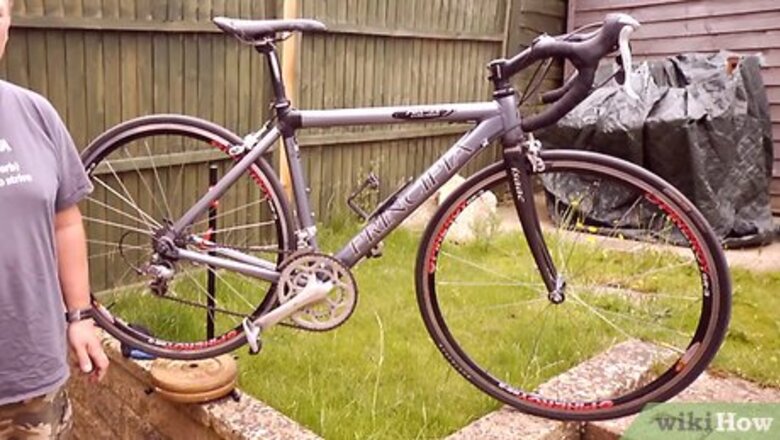
views
Fixing Shifting Issues
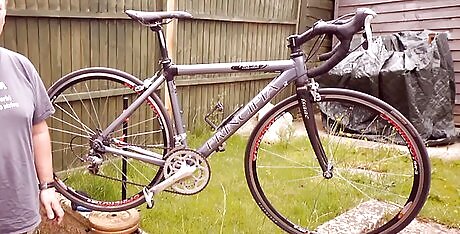
Prop the bike up so you can spin the wheels as you work. You'll need to either lift the bike into a bike stand or flip the bike over so that it rests on the seat and handlebars. To adjust a derailleur, you'll need to pedal the bike while working.
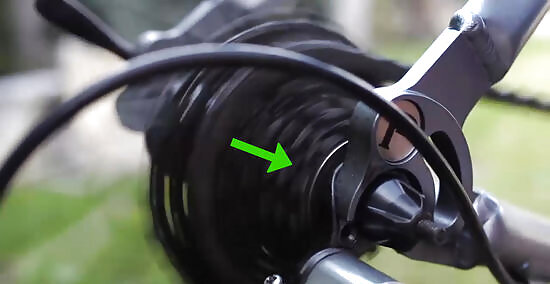
Shift the bike to the highest possible gear. On the rear axle, the lowest gear (1) is the largest sprocket, and the highest gear (5, 6, 7 depending on how many sprockets are on the cassette) is the smallest sprocket. It is furthest away from the centre line of the bike, or closest to the frame fork. A derailleur works by moving the chain from sprocket to sprocket. The derailleur is connected to the shift lever by a steel cable. The derailleur is moved by tightening or relaxing the cable tension. The highest gear (smallest sprocket) on the rear derailleur is actually the point of lowest cable tension, meaning the derailleur is doing the least work and is thus easiest to adjust. While pedaling the bike, locate the cable leading to your rear derailleur and pull on it gently. Note how this shifts the chain by moving the derailleur. All a derailleur does is align the chain with the sprockets on the cassette.
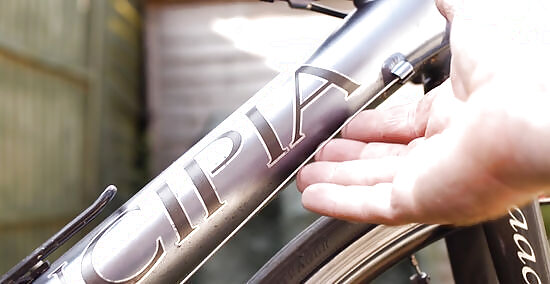
Locate the barrel adjuster, then follow this cable through the bike to look for any issues. The barrel adjuster is the small cylinder connecting the cable to the derailleur. Follow your cable from the rear derailleur up to the handlebars. The tension on this cable is what actually causes gears to shift. You need to have the tension in the cable set up correctly to shift from one gear to the next. Make sure it is seated in its housing and isn't bent, loose, or caught in anything. This isn't a common issue, but it happens.
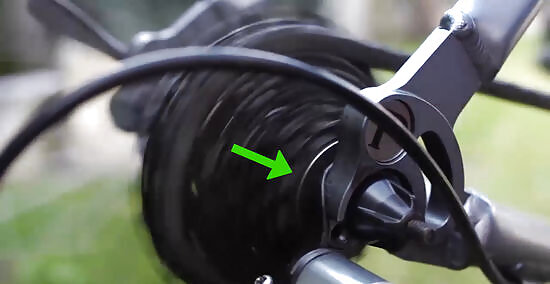
Attempt to shift through all of the gears in both directions, noting any issues. Keep pedalling the bike, shifting gears one at a time. Make a mental note of points where the chain skips a gear or needs to be clicked twice to shift a gear. Does the derailleur have problems going up or down the gears? Is there any noise or grinding?
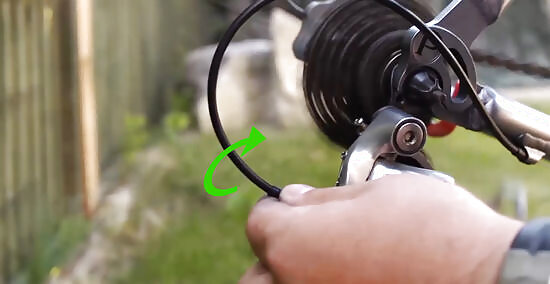
Return to the highest gear and start shifting until you reach a "problem area," as noted before. For example, if the bike struggles to get from fourth to fifth gear, stop shifting on the fourth gear. While still pedaling, turn the barrel adjuster in the direction you need the cable to fall which, in this case, would be counter-clockwise. Tightening the barrel changes the tension of the cable which, in turn, dictates the gear you're in. Note that if the bike is upside-down, you need to turn the barrel away from the direction you want the chain to move.
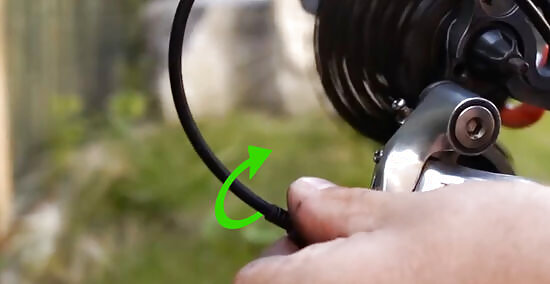
Rotate the barrel adjuster counter-clockwise to help the chain shift down, towards the larger gears. Loosening the barrel adjuster tightens the cable, making it easier to pull up towards the larger gears. If you shift down and nothing happens, leave it in the shifted gear and keep turning the pedals. Turn the barrel counter-clockwise until the chain jumps up and shifts on its own -- your bike is adjusted.
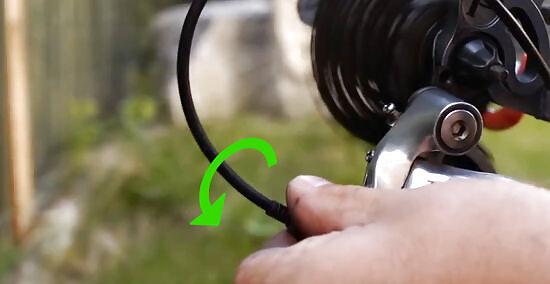
Rotate the barrel adjuster clockwise to help the chain shift up, towards the lower gears. If your chain struggles to move away from the bike, you can tighten the barrel. If it won't shift when you click it, keep pedalling the bike and rotate the barrel. This decreases the tension on the derailleur, allowing the chain to "fall" smoothly to the higher gears. Keep turning slowly until the chain shifts on its own, matching the gear you just tried to shift to. Loosening the barrel also helps if your chain is jumping two gears at once when heading to the larger sprockets.
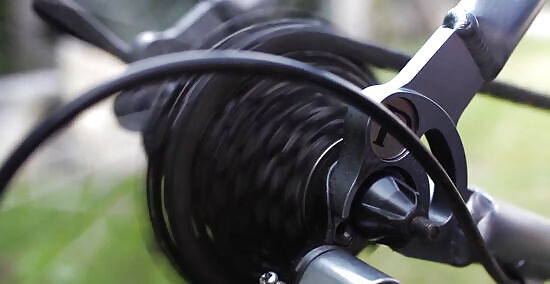
Check all of the gears by shifting up and down slowly. Once you've adjusted one gear to shift smoothly, the rest of the derailleur usually falls right into place. Check all of the gears to ensure you're adjusted, then move on. If you still have issues: Turn the barrel 2-3 turns to the right to full loosen it, then start over. If the cable was too tense when you started, it could need to be re-adjusted from scratch. Check for bent gears or derailleur arms. If this didn't work, there is likely a larger issue with the bike.

Lubricate the screws and pivot points with bike grease to prevent further issues. Keep the chain lubricated with special chain lube to ensure that stiff chain links do not affect the shifting, and to make sure that the drive train will last a long time.
Fixing Slipping Chains
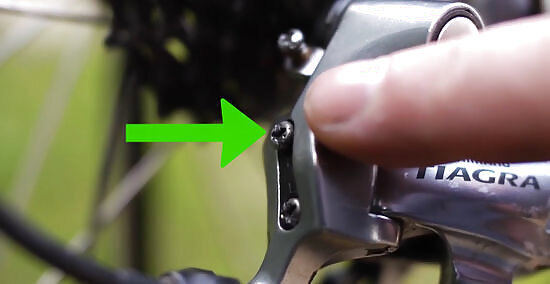
Only adjust your limit screws if the chain is popping out on either side of the derailleur. The two screws labeled "L" and "H" are used to adjust your limits. Basically, they determine how far in either direction the chain can travel. Unless you're having issues with the chain falling out, there is no reason to adjust these screws on the rear derailleur (as they were likely set properly at the factory). However, if your bike was in an accident or you installed a new derailleur, these screws may need to be adjusted. If you keep slipping a chain, check your limit screws. If you can't shift into the highest or lowest gear, check limit screws. If your chain is grinding against your frame, check limit screws.
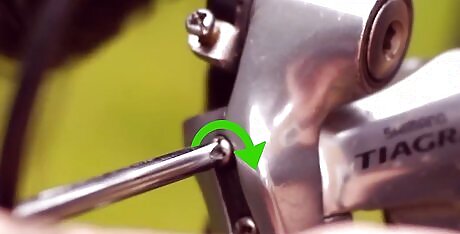
Turn the "H" (high) limit screw clockwise to prevent the chain from moving too far to the right, away from the bike. Of course, you would turn it counter-clockwise if the chain is getting stopped too early. The high limit is for the smallest gear in the rear derailleur.
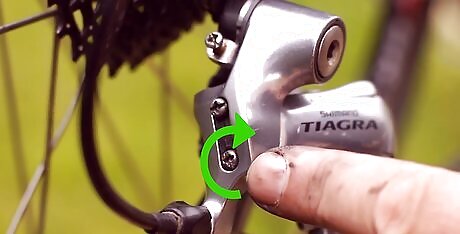
Turn the "L" (low) limit screw clockwise to prevent the chain from moving too far to the left (and potentially into your wheel). Again, turn it the opposite way (counter-clockwise) if the limit is pushed too far in. On the rear derailleur, the low limit is for the biggest gear.
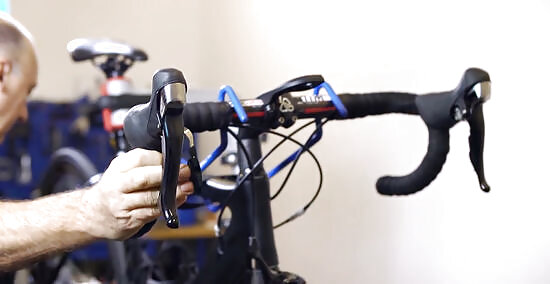
Shift to the high and low gears, visually confirming that the derailleur is lined up with the center of the gears. Once you've got the limits where you want them, make sure they are lined up nicely. You should see the jockey wheel (metal arm with small cogs under the derailleur) lined up right underneath the chain.
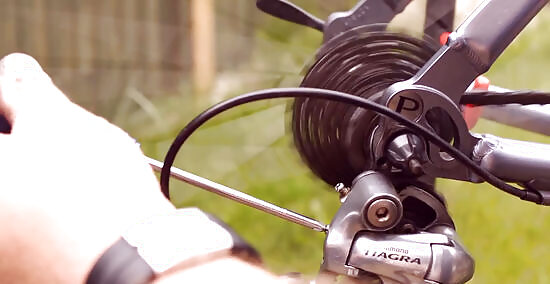
Test both screws and watch to see when the derailleur moves if the H and L are no longer marked. If you are in the furthest gear, you will see the derailleur moving as you adjust the screws. So, if you need to adjust the low limit, shift to the gear on the far left, the biggest one. Adjust both screws a 1/2 turn and notice if the derailleur moves at all. Make sure it lines up in the middle of the gear, then turn back both screws a 1/2 turn so you don't ruin the limits on the correct screw.




















Comments
0 comment